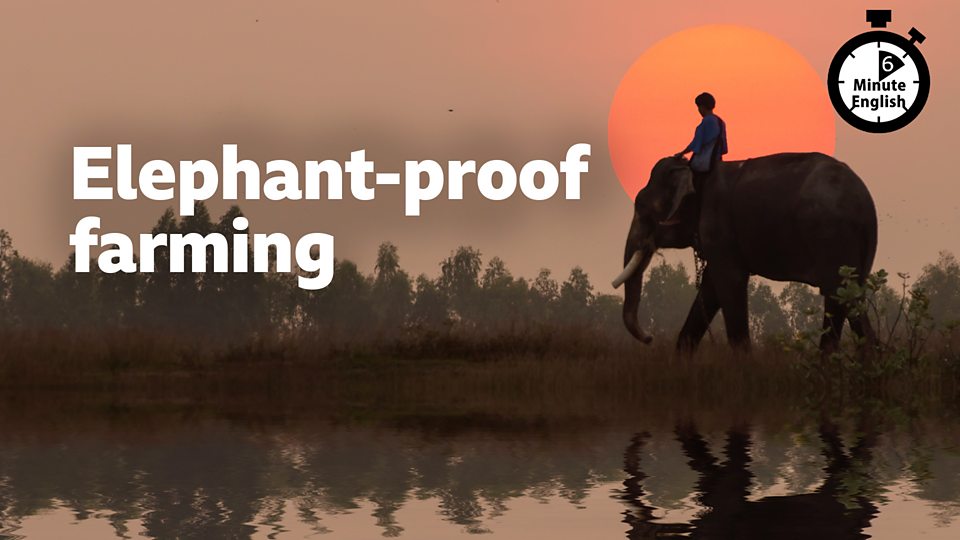
이번주 BBC Learning English - 6 Minute English가 다룬 문법 관련 이슈 는 관계대명사(6), 관계부사(3), 분사(3), that(3), 전치사(명사)구(2) 등이였습니다. 그 외에 접속사, it, 삽입 구문, 의문부사, 의문사, 동명사, 명사, 문장부호, 문장형식: 5형식, 복합전치사, 부정사 등이 각각 1 건씩 다루어졌습니다.
[본문] [05] Maybe the only good thing about Covid lockdowns was the return of wildlife to our towns and cities.
[설명] 『about Covid lockdowns』은 전치사명사구로 형용사의 쓸모를 합니다. 'the only good thing'을 뒤에서 꾸며줍니다.
[본문] [06] Birds, foxes, and deer were seen in the streets close to people's homes.
[설명] ⑴ 「close to」는 부사, 형용사, 명사 또는 분사 따위의 낱말이 전치사와 뭉쳐 전치사로 쓰이는 여러 낱말(구,句) 전치사입니다.
⑵ 『close to people's homes』는 전치사명사구로 형용사 쓸모를 합니다. 'the streets'를 뒤에서 꾸며줍니다.
[본문] [07] Of course, rubbing shoulders with animals - spending time with them - is amazing.
[설명] ⑴ 『rubbing shoulders with animals』는 동명사(구)입니다. 문장성분은 주어입니다.
⑵ 대시(줄표)는 동격 관계를 나타냅니다. 「rubbing ~」과 「spending ~」은 동격입니다. 대시가 '(관계)대명사+be동사'의 기능을 합니다.
[본문] [08] But imagine a hungry African elephant stumbling into your garden, and eating your prize vegetables!
[설명] 이번 월(=文章)의 동사 imagine는 5형식 동사입니다. 목적어는 'a hungry African elephant', 목적어 보충·어[補語, complement]는 'stumbling into ~'입니다. 'stumbling into ~'를 현재분사 형용사구로 생각해서 'a hungry African elephant'를 뒤에서 꾸민다고 보아도 될 듯합니다.
[참조 링크]☞ 5형식 구조: 주어 + 동사 + 목적어 + 목적격 보어
[참조 링크]☞ (영어) 5형식 문형에 대한 이애 (동사의 종류)
[본문] [10] It sounds unlikely, but that's exactly the problem faced by farmers in Africa.
[설명] 『faced by ~』는 과거분사(구)로 'the problem'을 뒤에서 꾸며줍니다. 분사 앞에 '주격관계대명사와 be 동사'가 간추려져 빠져 있다고 생각할 수 있습니다.
[본문] [14] This situation, known as human-wildlife conflict, is becoming more frequent.
[설명] 『known as ~』는 과거분사(구)로 {This situation,}을 뒤에서 꾸며줍니다. 분사 앞에 '주격관계대명사와 be 동사'가 간추려져 빠져 있다고 생각할 수 있습니다.
[본문] [15] But in this programme we'll be hearing about ingenious farmers in Kenya who are keeping their food safe from hungry wild animals.
[설명] 『who are keeping ~』의 who는 한정용법 주격의 관계대명사입니다. 선행(명)사는 'ingenious farmers'입니다.
[본문] [18] Weighing around six tonnes, a fully grown African elephant needs to eat a lot every day, but how much exactly?
[설명] 「Weighing around ~」은 이유 또는 원인을 나타내는 분사구문입니다.
[본문] [21] Hmm, I'll guess an elephant eats 150 kilos of food a day.
Hmm, I'll guess {that} an elephant eats 150 kilos of food a day.
[설명] guess 뒤에 명사절을 이끄는 접속사 that이 간추려졌습니다. 종속절의 문장성분은 목적어/보충·어[補語, complement]입니다.
[본문] [24] Victor works at Tsavo National Park in Kenya, where he's often faced with wild elephants breaking into farms for food and water.
[설명] 『where he's often ~』의 where는 계속용법의 관계부사로 「접속사+부사」의 기능을 합니다. '그런데, 그 결과로' 따위의 뜻을 갖습니다.
[본문] [28] What we experience here is, during the crop season, that is the rainy season, that's where we usually have the crop raids.
What we experience here is, during the crop season, that is the rainy season, {that} that's where we usually have the crop raids.
[설명] ⑴ 『What we experience here』는 what 목적격 관계대명사절로 절의 문장성분은 주어입니다.
⑵ what 관계사절이 주어, is가 동사 'that's where ~'절이 보충·어[補語, complement]절인 2형식 문장입니다.
⑶ 'that's where' 앞에 명사절(보어절)을 이끄는 접속사 that이 간추려졌습니다.
⑷ 『that is the rainy season』은 삽입절로 앞의 내용을 설명해 줍니다. 여기서는 'the crop season'을 설명합니다.
⑸ 『where we usually ~』 관계부사절에서 선행(명)사 'the place'가 간추려져 빠져 있습니다.
[본문] [32] They are looking for where there is green pasture, so they come to this community where we have these nutritious foods… you know elephants love maize, beans, and that is the crop that farmers actually farm… so they come and eat those crops here, and also looking for water.
[설명] ⑴ 『where there is green ~』의 where 마디[節, clause]는 의문사절로 볼 수도 있고, 선행명사 'the place'가 생략된 관계사절로 볼 수도 있습니다.
⑵ 『where we have these ~』의 where는 관계부사입니다, 선행(명)사는 'this community'입니다. this community
[본문] [36] It's easy to see how they can destroy crops and livelihoods.
[설명] ⑴ 『It's easy to see how ~』는 to부정사(구)가 문장의 진짜·주어(眞주어)입니다. 형용사가 보충·어[補語, complement]일 때 대체로 이러한 글짜임을 갖습니다.
⑵ 『how they can ~』는 의문부사 how 문입니다. how는 [wh- 질문] 형태의 직접의문문을 만들거나 간접의문문 형태의 명사절을 이끕니다.
[본문] [37] Victor works in a national park, a large area of land which is protected by the government because of its natural beauty, plants, or animals.
[설명] 「a national park」과 「a large area of land」가 동격입니다. 콤마가 동격을 나타냅니다.
[본문] [39] To raid means to suddenly attack a place and steal from it.
[설명] 『to suddenly attack』 짜임은 부사 suddenly가 to부정사를 꾸밉니다. 이처럼 부사가 to부정사 안쪽에 들어가는 꼴의 부정사 글짜임을 「분리된 부정사」라고 합니다.
[참조 링크]☞ What Are Split Infinitives?
[참조 링크]☞ to 부정사 수식 부사의 위치 - 분리부정사 - 논란?
[참조 링크]☞ 분리 부정사란 무엇일까요?
[본문] [41] Victor says the raids have become a way of life, an activity that has become a regular thing in people's lives, rather than something that happens only occasionally.
Victor says {that} the raids have become a way of life, an activity that has become a regular thing in people's lives, rather than something that happens only occasionally.
[설명] ⑴ says 뒤에 명사절을 이끄는 접속사 that이 간추려졌습니다. 종속절의 문장성분은 목적어입니다.
⑵ 『that has become ~』의 that은 관계대명사입니다. 격은 주격이고, 선행(명)사는 'an activity'입니다. 『that happens only ~」의 that도 같은 쓰임입니다. 선행명사는 something입니다.
[본문] [44] Fortunately, there's an unusual solution that's got people buzzing: bees.
[설명] 『that's got people ~』의 that은 관계대명사입니다. 격은 주격이고, 선행(명)사는 'an unusual solution'입니다., that's는 'that has'의 줄임말입니다.
[본문] [45] Ancient Kenyan folklore says that elephants are scared of bees.
[설명] 『that elephants are ~』는 접속사 that이 이끄는 명사절입니다. 절의 문장성분은 목적어입니다.
[참조 링크]☞ 명사절 that 2 (보어로 쓰이는 that절)
[본문] [60] A national park is a large area of a country which is protected by the government because of its natural beauty, plants, or animals.
[설명] 『which is protected ~』의 which는 주격의 관계대명사입니다. 선행명사 'country'의 뜻을 묶어 주는 한정용법입니다.
[본문] [61] If you describe an activity as a way of life, you mean that it's become a common or regular event for someone, rather than something that happens only occasionally.
[설명] 『that happens only ~』의 that은 관계대명사입니다. 격은 주격이고, 선행(명)사는 something입니다.
pdf 파일은 이곳을 클릭하세요.
https://softca.tistory.com/2547을 클릭하세요.
이 블로그에는 [BBC 6분 영어와 관련하여 매주 다음과 같은 글들이 게시 됩니다
- 단어공부(금주 대본에 나온 주요 어휘) https://softca.tistory.com/2548
- 멀티단어공부(금주 대본에 사용된 멀티단어(구동사, 숙어) 간단 정리) https://softca.tistory.com/2549
- 독해공부(금주 대본의 문장별 해석(직역) 자료) https://softca.tistory.com/2550
- 문장별 문법공부(문장별 문법 설명) 이 글입니다
- 금주의 어휘(금주 대본에 나온 금주의 어휘를 집중적으로 정리한 자료) 이 글의 포스팅 시점에는 아직 작성되지 않았습니다.
- 항목별 문법공부(금주 대본에 나온 문법을 주제별/항목별로 정리한 자료) 이 글의 포스팅 시점에는 아직 작성되지 않았습니다.
- 금주의 구동사(금주 대본에 사용된 구동사 상세 정리) 이 글의 포스팅 시점에는 아직 작성되지 않았습니다.
- 금주의 PDF(금주의 PDF 및 기타 다운로드 파일) https://softca.tistory.com/2547
아래의 이미지를 클릭하시면 PDF로 된 대본(Script)를 다운받을 수 있습니다.
[영어 문장 공부] 자료를 처음 보시는 분은 아래의 링크를 클릭하셔서 「공부법」을 먼저 보시기를 권장 드립니다.
[영어문장공부] 학습법 보기






